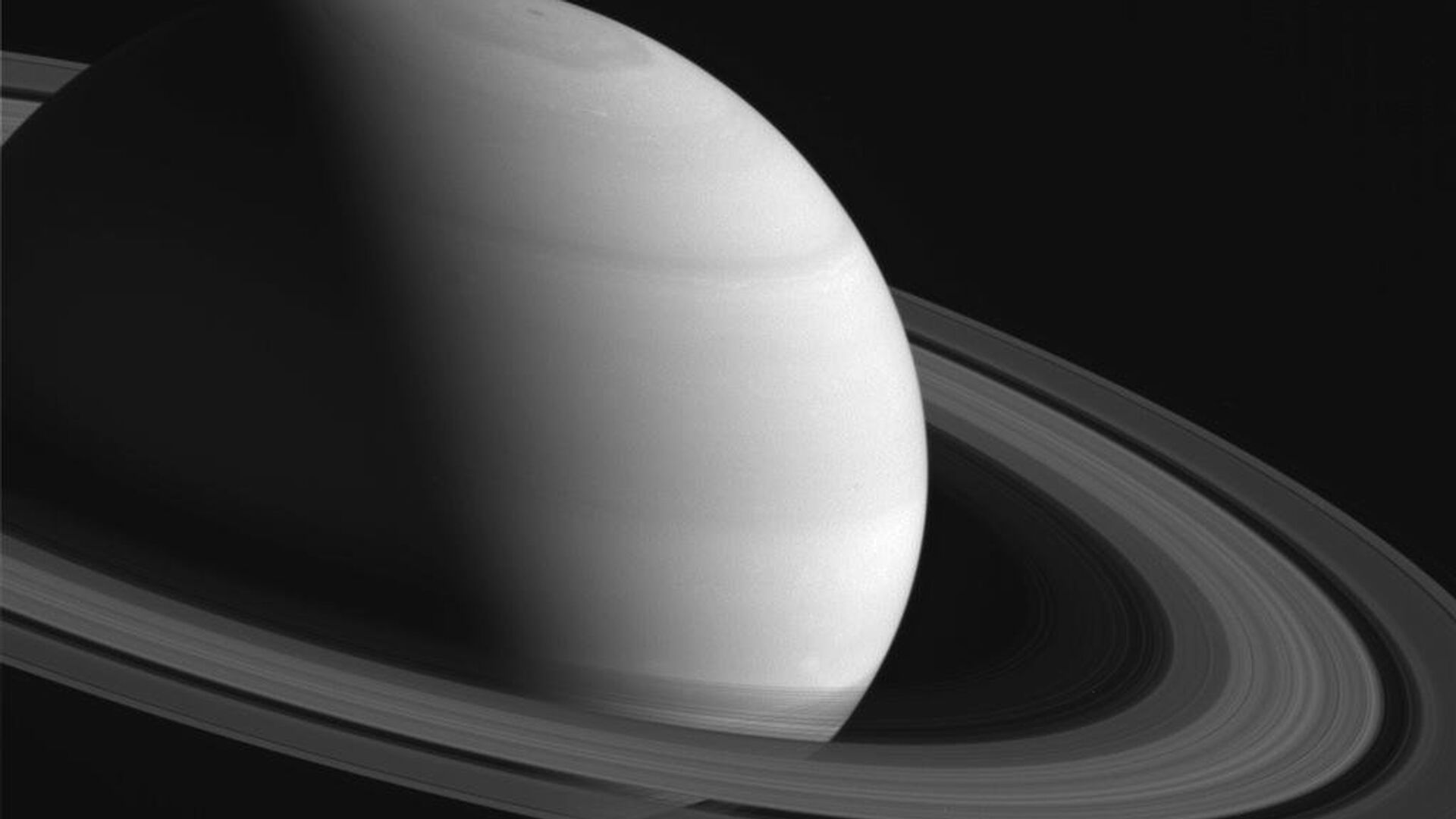https://sputnikglobe.com/20230517/cosmic-spring-chicken-saturns-rings-found-to-be-no-older-than-400-million-years-1110411620.html
Cosmic Spring Chicken: Saturn's Rings Found to Be No Older Than 400 Million Years
Cosmic Spring Chicken: Saturn's Rings Found to Be No Older Than 400 Million Years
Sputnik International
New research led by physicist Sascha Kempf provided compelling evidence that Saturn's rings are surprisingly young, potentially resolving a scientific mystery that has puzzled researchers for over a century.
2023-05-17T04:04+0000
2023-05-17T04:04+0000
2023-06-20T17:11+0000
beyond politics
science & tech
saturn
nasa
university of colorado boulder
space
space exploration
https://cdn1.img.sputnikglobe.com/img/105565/07/1055650746_0:225:1024:801_1920x0_80_0_0_edd19bfdbed53c0b845dbdc44cf3db0b.jpg
A new study has suggested that Saturn's rings are no more than 400 million years old, significantly younger than the planet which officials estimate to be 4.5 billion years old.To determine the age of Saturn's rings, the scientists focused on studying the accumulation of dust. They observed that tiny grains of rocky material constantly pass through the solar system, leaving behind a thin layer of dust on planetary bodies, including the ice that comprises Saturn's rings.By analyzing the rate at which this dust layer builds up, researchers were able to estimate the rings' age.The team analyzed data collected by the Cosmic Dust Analyzer on NASA's Cassini spacecraft between 2004 and 2017, and examined 163 grains of dust originating from beyond Saturn's vicinity. Despite the relatively small sample size, their calculations indicated Saturn's rings have likely been gathering dust for only a few hundred million years, implying the rings are a relatively recent cosmic phenomenon.The study's findings shed light on the age of Saturn's rings but do not provide a conclusive answer regarding their formation. The origins of the rings remain unknown, presenting an ongoing scientific puzzle. Furthermore, the research suggests Saturn's rings might be in the process of disappearing.NASA scientists have previously reported the ice is gradually raining down onto the planet and could vanish completely within approximately 100 million years. The existence of these ephemeral features during a time when they could be observed by Galileo and the Cassini spacecraft raises questions about their formation. Some scientists propose Saturn's rings may have originated from the gravitational disruption of one of its moons.Kempf emphasized the remarkable fortune in witnessing the rings while they are still present and dynamic, prompting further inquiries into their origins. The study's results provide closure on the rings' age but leave scientists with additional puzzles to unravel.The findings were published in journal Science Advances.
https://sputnikglobe.com/20230429/second-ring-on-dwarf-planet-quaoar-challenges-fundamental-laws-of-astrophysics-1109931237.html
https://sputnikglobe.com/20230513/take-that-jupiter-saturn-wins-back-status-as-planet-with-most-moons-1110305743.html
saturn
Sputnik International
feedback@sputniknews.com
+74956456601
MIA „Rossiya Segodnya“
2023
News
en_EN
Sputnik International
feedback@sputniknews.com
+74956456601
MIA „Rossiya Segodnya“
Sputnik International
feedback@sputniknews.com
+74956456601
MIA „Rossiya Segodnya“
saturn, saturn's rings, space exploration, how old are saturn rings, sascha kempf, cassini mission, cosmic dust analyzer on nasa's cassini
saturn, saturn's rings, space exploration, how old are saturn rings, sascha kempf, cassini mission, cosmic dust analyzer on nasa's cassini
Cosmic Spring Chicken: Saturn's Rings Found to Be No Older Than 400 Million Years
04:04 GMT 17.05.2023 (Updated: 17:11 GMT 20.06.2023) New research led by physicist Sascha Kempf from the University of Colorado Boulder has provided compelling evidence that Saturn's rings are surprisingly young, potentially resolving a scientific mystery that has puzzled researchers for over a century.
A new study has suggested that Saturn's rings are no more than 400 million years old, significantly younger than the planet which officials estimate to be 4.5 billion years old.
To determine the age of Saturn's rings, the scientists focused on studying the accumulation of dust. They observed that tiny grains of rocky material constantly pass through the solar system, leaving behind a thin layer of dust on planetary bodies, including the ice that comprises Saturn's rings.
By analyzing the rate at which this dust layer builds up, researchers were able to estimate the rings' age.
"Think about the rings like the carpet in your house," Kempf said. "If you have a clean carpet laid out, you just have to wait. Dust will settle on your carpet. The same is true for the rings."
The team analyzed data collected by the Cosmic Dust Analyzer on NASA's Cassini spacecraft between 2004 and 2017, and examined 163 grains of dust originating from beyond Saturn's vicinity. Despite the relatively small sample size, their calculations indicated Saturn's rings have likely been gathering dust for only a few hundred million years, implying the rings are a relatively recent cosmic phenomenon.
The study's findings shed light on the age of Saturn's rings but do not provide a conclusive answer regarding their formation. The origins of the rings remain unknown, presenting an ongoing scientific puzzle.
Scientists have long been intrigued by Saturn's rings, dating back to Galileo Galilei's observations in 1610. In the 1800s, James Clerk Maxwell deduced that the rings were not solid but composed of numerous individual pieces.
Saturn's rings comprise seven distinct bands made up of countless chunks of ice, predominantly composed of pure water ice - the remarkable cleanliness, with negligible amounts of rocky matter, has perplexed scientists. Previous assumptions held the rings formed simultaneously with Saturn, but this notion raised questions about the rings' pristine condition.
Furthermore, the research suggests Saturn's rings might be in the process of disappearing.
NASA scientists have previously reported the ice is gradually raining down onto the planet and could vanish completely within approximately 100 million years. The existence of these ephemeral features during a time when they could be observed by Galileo and the Cassini spacecraft raises questions about their formation. Some scientists propose Saturn's rings may have originated from the gravitational disruption of one of its moons.
Kempf emphasized the remarkable fortune in witnessing the rings while they are still present and dynamic, prompting further inquiries into their origins. The study's results provide closure on the rings' age but leave scientists with additional puzzles to unravel.
The findings were published in journal
Science Advances.




